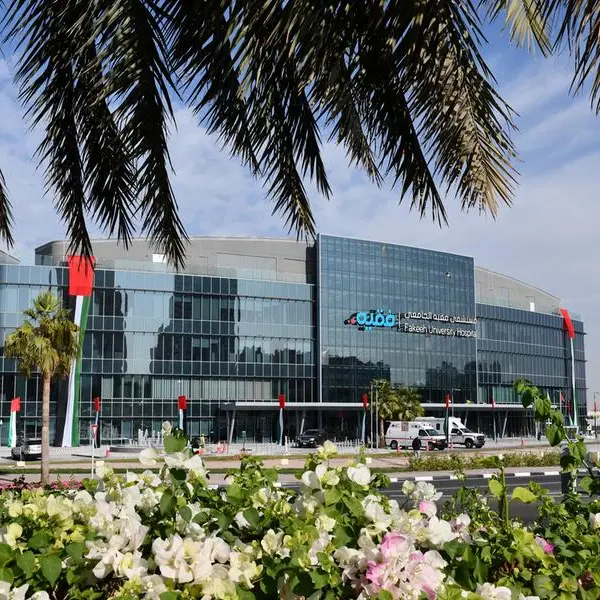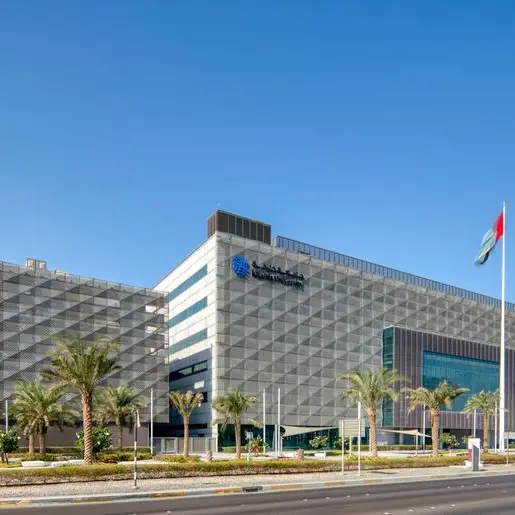PHOTO
After a dry phase in 2016, the market is set to witness a flurry of new IPOs primarily from the insurance sector following strict directives from CMA.
The last couple of years have not been encouraging for capital markets with negative returns in 2015 and very modest returns in 2016. The first half of 2016 was very challenging and things started improving a little in the second half with overall markets going up by about five per cent in 2016. According to analysts last year would be seen as a year of transition with the economy and the markets getting adjusted to the low oil price environment.
With market sentiments being low and investors watching the economic situation it wasn't surprising that there were no new issuances into the capital market. In fact there were no new public offerings in 2016 and all the planned initial public offerings (IPO) by both the government and private sector where either cancelled or deferred.
But the case will be totally different this year. In July 2014, the Capital Market Authority (CMA) had issued new guidelines for insurance companies, which require companies to double their share capital to RO10mn from RO5mn, and making it compulsory for them to list on the bourses. The CMA had given a three-year window for companies to comply with the new laws which closes in August this year. And in 2016 the capital market and insurance sector watchdog reiterated its stance making it clear that it is not
looking at extending the deadline for insurers to list on Muscat Securities Market (MSM) and double their share capital. This means seven national insurance firms will have to float shares in the market this year in line with this new regulation. Besides them the government also plans to garner revenue from its divestment programme which could lead to some medium ticket IPOs this year.
Conducive for IPOs?
The big question in everyone's mind is whether the current economic situation is conducive for IPOs.
Joice Mathew, head of equity research at United Securities, says that 2017 will only be good for an IPO if there is a valuation expansion in the market. He points out that the prices are not very expensive at the moment and adds that a quick glance of the corporate performance of companies will reveal that except for a few most of them have reported stable or minor growth in their profits.
“It's not just the appetite, we should also look at the mood of the market which is also very depressing given that the oil prices are low and the deficit is surging. As of now, it's not the right time for a stake sale. And I have a similar view at least till the first half of 2017 unless the market valuation goes up by say 40 per cent. Now the mood is 'risk off' and people are parking their money in banks and are happy with 5-6 per cent interest on those deposits.”
Kanaga Sundar, assistant vice president – Research, Gulf Baader Capital Markets, says that the outlook for the GCC markets doesn't look pessimistic like in 2015, however they are maintaining a cautious view.
“While in terms of the government, it would be another year of fiscal consolidation programme and need to look at various means of cost rationalisation to lower the budget breakeven levels. But we believe if the oil trades consistently above US$55 per barrel for the three months we will be on a better footing for H2 2017 in terms of new project and infrastructure spending.”
Listing pipeline
In terms of IPOs, two utility sector companies that analysts expect strong response from investors are Muscat Desalination Company, which is expected to be listed during H1 2017 and the Muscat Electricity Distribution Co (MEDC), which is part of the government divestment programme is expected to be listed in MSM during H2 2017.
With oil revenues dwindling over the last few years the government has been actively scouting for other sources of revenue and had announced big ticket divestment programmes. The divestment of these two companies will kick start the government's share sale programme.
Oman government in November had announced plans to disinvest 49 per cent stake in MEDC by way of a combination of private placement and IPO. Nama Holding, which is the holding company of the power distribution firm, had also appointed a transaction advisor to manage the disinvestment according to a press release.
“The transaction advisor will carry out the studies and prepare the required documents for the process in addition to managing both the private and public placements of the transaction,” said Nama Holdings in a press release. Subsequently, the advisor will undertake the necessary steps to list the company shares in MSM.
Analysts believe the listing of both these companies will evince a lot of interest from investors and are certain to be fully subscribed if not over subscribed. The utility sector has always been an attractive proposition for investors in Oman with two companies that got listed in 2014 getting good response.
Sundar says, “As far as the listings, especially in the utility sector companies, are concerned we see strong appetite from the institutional investors who are looking at stable returns over a longer period.”
While IPO activity was more or less muted in 2015, the successful listing of Phoenix Power in June suggests there is continued investor appetite for utility companies with its issue getting oversubscribed by 15 times, the strongest response for any float in the region that year.
Besides this other companies that are expected to get listed are from the mining sector – Mining Development Oman (MDO) and Kunooz Oman. The newly established MDO will be a holding company, which will create subsidiary firms for developing different types of metal ores/minerals, such as copper, limestone and gypsum. It is a joint venture between four state-owned agencies – the State General Reserve Fund, the Oman Investment Fund (OIF), the Oman Oil Company and the Oman National Investments Development Company. It was supposed to get listed in 2016 but the issue is now expected to hit the capital markets in the first half of this year. As promoters, the four agencies will own equal shares of a combined RO60mn in capital, with a further RO40mn to be raised through the IPO.
Kunooz Oman is another IPO that is expected to happen in the first half of 2017. Its chairman, Salim Abdullah al Rawas, in August said that the company which had a paid up capital of RO16mn received initial approval from the CMA to float 25 per cent of its shares through an IPO and the percentage might change or remain the same. The company also sold 20 per cent of its stake to OIF for an undisclosed amount and the inclusion of OIF as a shareholder is set to increase investor confidence, lend credibility and strengthen Kunooz Oman transformation into a public company.
Insurers’ dilemma
The insurance sector in Oman is overcrowded with about 22 insurers in the market to write about US$460mn premium. This has led to cut throat competition and it comes on the back of the low oil price scenario which has marred the sector. The reduction in
business and fierce competition had impacted business in 2016 with premium prices going down further. And unless the economy recovers insurers expect the scenario to continue. And on top of this is the pressure to get listed has left the insurers in a predicament.
As per the mandatory listing regulation, seven insurance firms namely Muscat Insurance, Muscat Life Insurance, Vision Insurance, National Life Insurance, Oman Qatar Insurance Co (OQIC),
Falcon Insurance and Al Ahlia Insurance Company are expected to float shares this year. In an ideal scenario insurers would like to defer the listing. But with the August deadline hanging on the head and the regulators in no mood to relax the deadline, insurers are left with no choice.
Navin Kumar, the acting CEO of OQIC, says, “In 2014, when CMSA released Royal Decree No 39/2014 directing insurance companies to have a minimum paid up capital of RO10mn and to be publicly listed, the economic and capital market conditions in Oman were strong. The fall in global energy prices in the past 24 months has had a negative impact on Oman and other GCC countries. This, in turn, has resulted in challenging capital markets conditions and depressed IPO climate.
“If CMA does not extend the deadline for insurance companies to comply with the Royal Decree, the existing unlisted insurers within Oman will need to take the necessary steps to obtain a listing on the Muscat Stock Exchange and increase to their share capitals. OQIC is already in advanced discussions with advisors on our proposed initial public offering during the first half of 2017.”
With depressing market conditions and so many companies coming to get listed, especially from the same sector, analysts feel there won't be much takers for these offerings unless and until they price it attractively. Besides that they believe the timing will be important as listing during April would be ideal as investors will have the dividend money available with them.
Mathew believes that the government spending is likely to go down further and insurance companies will continue to remain under pressure. He says, “So the bottom line is I don't see any major growth in insurance premiums and there won't be much demand for insurance stocks unless it is very attractively priced. However the flip side is that you cannot price it attractively in such an environment. The maximum level of pricing that they can fetch itself is depressing for them. And giving a further discount on what they can achieve is very difficult proposition from the perspective of the companies.”
Analysts are looking at possibility of CMA scheduling these IPOs on timely intervals. Sundar says, “As far as the insurance companies, the CMA has mandatory listing requirements during 2017, we would need to see the improvement in market sentiments, which would remain critical in terms of timings of these IPOs. We can anticipate few of the companies looking at extension of the deadline.”
He adds that the market is not ready for the series of IPOs in a short period of time and believes that CMA will ensure that it is done in a timely manner.
Mathew believes that the first one or two companies may have a successful listing and the balance will depend on the response of the market to the earlier ones. However he throws light on to an interesting proposition that insurers could get the unsubscribed portion underwritten by the existing shareholders or by a large investor or financial institution.
“CMA could ask them to go and underwrite this issue since these are small issues. In that case it is an attractive opportunity for major investors to build a stake in these companies. So if an investor like a financial institution or a pension fund feels he missed the insurance bus, it is an opportunity for them to enter the company with a sizeable stake”.
P R Ramakrishnan, CEO of Vision Insurance, says that whilst Vision is committed to abiding by the CMA directives, given the option, they would prefer to time their IPO differently and adds that they have presented their views in this regard to the CMA.
“We don't know if there is a room for flexibility since it is a Royal Decree. If there is room I believe the regulators would be willing to look at it empathetically. Our interactions with the CMA are continuing and we will act as necessary in consultation with the key officials at CMA. The ideal scenario is to achieve a certain track record, create more value and wait for the right time before a company opens its resume to the public.”
Ramakrishnan states that they agree with the regulator's view on doubling the paid up capital and personally feels that it should be more than RO10mn to a level which will drive companies into consolidation. Fragmented Capital is a bigger worry that breeds imperfect practices not in the best interest of the sector, he added.
Consolidation inevitable
In small but overcrowded markets, the way forward is consolidation and this is likely to happen in the insurance market in Oman too. Analysts believe that the increase in the paid up capital could give the impetus for companies to merge.
“The insurance sector may also see consolidation during 2017 We are anticipat-ing few companies to come for listing and the rest may go for consolidation,” says Sundar.
Muscat Insurance Co and Muscat Life Assurance Co, which are subsidiaries of parent company Muscat National Holding Co are two companies that were expected to get listed. Earlier the proposal was to merge the two insurance companies to form a composite insurance company and then get listed. That proposal is no longer there and now they are looking at a merger of the subsidiary companies into its parent company, which is already listed. The parent company then will have a composite insurance licence under which they can have both general and life insurance businesses.
Philip K Philip, Group CEO of Muscat National Holding Co, Muscat Insurance Co and Muscat Life Assurance Co, says, “This is a unique advantage which we have over all the other insurers and since the parent company is already listed we don't need to go for a separate listing. Most likely that will be the path we will be taking as that avoids any uncertainty with regard to the IPO demands and subscription. By March end, we will take the formal decision on that front and will be complying with the regulatory requirements within the time limit.”
Over the past two years, Vision Insurance was one of the companies involved in initiatives towards achieving sector consolidation.
Ramakrishnan says, “We are open for consolidation if the synergy is beneficial and adds value to the stakeholders in the merging entities. We are unaware of any such proposals presently.
“Thanks to our consistent profitable track record so far, Vision continues to evince interest of potential investors. We have the support of a strong and cohesive shareholder group with a long term perspective. We will welcome such initiatives because we believe that is in the best interest of the sector.”
The general consensus is that markets are expected to remain stable at least for the first half of next year and analysts feel that companies should wait and watch before jumping the IPO bandwagon. Having said that they feel the utilities sector IPO will be in demand while insurance listings could see a tepid response barring a few. Even though CMA has refused to budge from its stance on extension, insurers and analysts believe that the regulator will reconsider if market conditions prevail.
© businesstoday 2017












